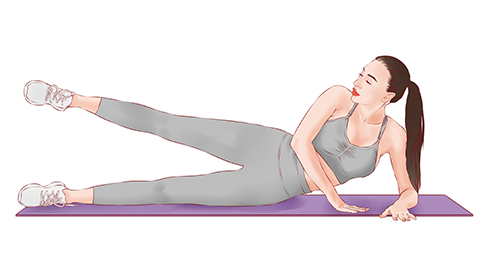How to perform pelvic floor muscle repair
Repair of the pelvic floor muscles primarily targets injuries or dysfunctions of these muscles, and may involve Kegel exercises, urine retention training, electrical stimulation therapy, biofeedback therapy, and surgical treatment. These methods are commonly used by women after childbirth, men after prostate surgery, or individuals suffering from chronic constipation, chronic coughing, or other conditions that increase pressure on the pelvic floor muscles. Detailed analysis is as follows:

1. Kegel Exercises: Kegel exercises involve voluntary and repetitive contractions and relaxations of the pelvic floor muscles. The specific technique involves tightening the anal muscles for no less than 3 seconds, then relaxing for about 3 seconds, repeating this cycle. Each session can last approximately 15 minutes, performed 2–3 times daily. This method effectively strengthens the pelvic floor muscles and promotes the recovery of muscular contraction ability and tone.
2. Urine Retention Training: This involves interrupting the urinary stream during urination without fully emptying the bladder, thereby exercising the pelvic floor muscles. Once the urge to urinate becomes overwhelming, the remaining urine is voided. This method helps enhance the urinary control ability of the pelvic floor muscles and improve conditions such as urinary incontinence.
3. Electrical Stimulation Therapy: This method uses electrical stimulation devices to stimulate the pelvic floor muscles, activating muscle cells and promoting muscle contraction. It should be performed under the guidance of a qualified physician, with electrode pads applied to the skin to deliver electrical stimulation training, achieving effective therapeutic results.
4. Biofeedback Therapy: Biofeedback therapy utilizes a biofeedback device to convert pelvic floor muscle activity into visual signals, allowing patients to perceive the state of muscle contraction and relaxation. Through training, patients can better master the techniques of pelvic floor muscle contraction, gradually improving muscle strength and endurance.
5. Surgical Treatment: Patients with severe pelvic floor muscle laxity or other pelvic floor dysfunction disorders, such as pelvic organ prolapse, may require surgical intervention. Surgical options include pelvic floor reconstruction and vaginal tightening procedures, aiming to restore the anatomical position and normal function of the pelvic floor muscles.
It is recommended to maintain a healthy lifestyle, ensure adequate sleep, improve dietary habits, and regulate overall physical condition to promote general health.







